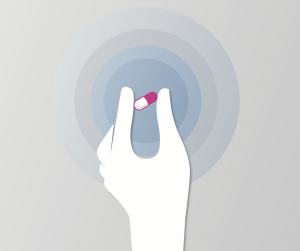Each month in Boyz the team from NAM aidsmap will be reporting the latest news on HIV and sexual health. You can read more on their website too.
HIV treatment continues to improve, a new study has found. In people who started treatment between 1994 and 2000, half were still taking their first drug combination and had an undetectable viral load, two years later. But in people starting HIV treatment between 2011 and 2015, 80% were still on their original treatment and were undetectable, two years later.
The analysis was conducted by Professor Andrew Carr of St Vincent’s Hospital, Sydney. He looked at the results for 78,000 people who had taken part in 181 separate studies. The studies were done in a range of countries between 1994 and 2015. His analysis showed that outcomes for people starting treatment in more recent years are better than those in people who started treatment longer ago.

Professor Carr was interested in how many people were still taking the same drug combination and had an undetectable viral load, two years after starting their treatment. An undetectable viral load shows that HIV treatment is working well. When someone with HIV is undetectable they can’t pass HIV on to their sexual partners.
People who did not do well on their first treatment usually switched to an alternative drug combination which suited them better.
The study shows which drug combinations are likely to have the greatest success. People starting treatment with drugs from the integrase inhibitor class (such as dolutegravir or raltegravir) were more likely to stick with their first-line treatment. Taking pills once a day (rather than twice a day) made more of a difference than the number of pills they took.
Good as these results are, Professor Carr says it’s still possible to do better. Even with the most modern HIV treatments, one in five people stop or change their treatment regimen within two years of starting.
Read more at aidsmap.com/page/3398696
Progress towards an HIV vaccine
In a step forward in the search for an HIV vaccine, scientists in California have manufactured an HIV vaccine that caused monkeys to produce broadly neutralising antibodies (bNAbs).
These complex molecules, which naturally develop in some people with HIV after years of infection, stop the virus from infecting cells. If a vaccine could make people produce their own bNAbs, their immune system would have a stronger and more complete response to HIV. This might prevent HIV infection altogether.
Professor Denis Burton of the Scripps Institute aimed to show that a single shot of a vaccine could achieve protective levels of bNAbs. This happened in six of the 12 monkeys that the experiment was done on.
He also wanted to find out whether these antibody responses would protect the animals against infection with a monkey-adapted form of HIV (simian HIV). Infection was delayed in all monkeys and in two of them, it was completely prevented.
This is the first time that effective broadly neutralising antibodies (bNAbs) to any infection have been generated in any mammals other than cows by vaccinating them.
Read more at aidsmap.com/page/3409627
One hundred years of sexually transmitted infections
Rates of gonorrhoea, syphilis and other sexually transmitted infections (STIs) have been very high in recent years, especially in gay and bisexual men.
But an historical analysis by Dr Hamish Mohammed of Public Health England shows that these rates have not reached the historic high points for STIs seen in the last century.
Take, for example, gonorrhoea. In 2017, there were about 45,000 cases of gonorrhoea, half of them in gay and bisexual men. But looking back to when records began in 1918, we can see that rates were also very high as troops came back from fighting World War I (around 40,000 cases a year in 1919 and 1920) and were above that level for most of the 1930s. And this was in a country with a smaller population.
Gonorrhoea diagnoses fell during World War II and then peaked in 1946 to 54,000 as soldiers came home from the front. The introduction of antibiotic treatments brought the figure down to about 20,000 during the 1950s but then the new era of sexual freedom (as well as antibiotic resistance) led to gonorrhoea cases rising. There were over 60,000 cases a year during the 1970s.
The AIDS crisis and the widespread adoption of condoms led to steady decreases in gonorrhoea during the 1980s and early 1990s, with figures as low as 10,000 a year around 1995. But rates of gonorrhoea (and other sexually transmitted infections) have been steadily increasing ever since effective HIV treatments became available in 1996.
Since 2012, there have been over 30,000 cases a year, rising to 45,000 in the last two years.
Among gay and bisexual men specifically, the most common STIs are gonorrhoea (21,000 cases in 2017), chlamydia (15,000) and syphilis (6,000).
Read more at aidsmap.com/page/3406078
For more of the latest news and information about HIV and sexual health visit aidsmap.com















